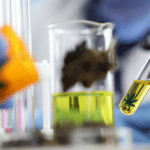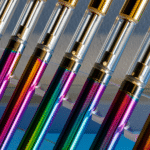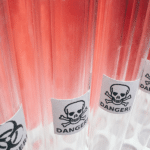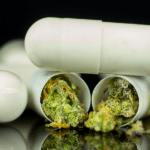In June 2018, the Food and Drug Administration (FDA) gave its blessing to Epidiolex, a purfied CBD pharmaceutical, for treating severe pediatric epilepsy. Six months later, Congress passed the Farm Bill, which legalized the cultivation of industrial hemp for many uses, including the production of biomass for CBD oil extraction. The 2018 Farm Bill defined hemp as cannabis with no more than 0.3 percent tetrahydrocannabinol (THC).
In theory, these momentous developments should make it easier to access CBD products. But many issues remain unresolved. How will the federal government regulate nonpharmaceutical, hemp-derived CBD? Will federal policy continue to privilege CBD isolates, while discriminating against artisanal, full spectrum, CBD-rich oil that may actually be more effective than single-molecule pharmaceuticals? What policies should be implemented to ensure wide and easy access to high-quality, lab-verified, artisanal CBD-rich products in addition to pharmaceutical options?
Project CBD encourages consumers to seek out products made from the unfertilized female flower tops of high-resin CBD-rich cannabis, which is much better suited for medicinal oil extraction than low-resin fiber hemp or industrial hemp grown for seed oil and protein. But the debate over sourcing cannabidiol from “marijuana” (any cannabis with more than 0.3 percent THC), is fast becoming moot, rather than hemp is quickly becoming moot, as most of what passes for high CBD hemp – or “hemp wink wink,” as we like to say at Project CBD – actually gets 90 percent of its genetics from high resin marijuana, according to a 2021 genomics study by the University of Minnesota and Sunrise Genetics. If grown, extracted, and processed well, such plants qualify as adequate starter material for producing CBD-rich oil concentrates.
If you live in a state where medical marijuana is legal, get your CBD products from a licensed dispensary. If you don’t reside in a state or country with a robust medical marijuana or adult use program, you can access CBD products via online storefronts or, in some areas, from actual storefronts. But choosing among the many unregulated CBD brands – which “typically have less manufacturing oversight than kitty litter,” as one industry insider put it – can be problematic.
Many hemp-derived CBD products are mislabeled. A study reported in the Journal of the American Medical Association indicated that 69% of 85 products surveyed had an incorrect amount of CBD and/or THC on the product label.
Another survey found significant discrepancies among some of the leading hemp CBD brands that falsely claim full-spectrum CBD-rich oil is in their products; lab tests of several samples revealed only one cannabinoid – CBD – was present, indicating that these products were made with a CBD isolate rather than a more efficacious whole plant CBD-rich extract.
Another problem: Some overly processed hemp-derived CBD products are tainted with toxic solvent residues, texturizing agents, artificial flavors and colors, corn syrup, and other contaminants.
But good quality CBD-rich products are also available. Which products deserve our trust?
Shopping Tips
- Consumer Reports suggests that you look for products made by companies in states that have legalized the recreational and medical use of cannabis “since they tend to have stricter standards.”
- If you live in a “CBD-only” state, choose CBD products made with American-grown hemp (from Colorado, Kentucky, Oregon, Montana, Vermont, Tennessee, etc.) rather than foreign sources.
- If possible, seek out CBD-rich products derived from high-resin cannabis grown sustainably in accordance with certified regenerative organic standards.
- Choose “full spectrum” CBD-rich oil extracts, not isolate, distillate or products labeled “pure CBD” or “no THC.” Full spectrum means it includes numerous cannabis compounds, including a small amount of THC. If THC is completely illegal in your state, opt for so-called “broad spectrum” CBD oil products that include other cannabis components but no THC.
- Look for product labels that indicate the amount of CBD and THC per serving – not just the total cannabinoid content for the entire bottle.
- Beware of companies that make explicit health claims about CBD products (this is not allowed by the FDA).
- Check the Certificate of Analysis (COA) to verify that a product has gone through independent lab testing for quality assurance. A CBD manufacturer should be able to produce a third-party COA that shows how their products performed on screenings for CBD, THC, and any contaminants. Some states also require—and many manufacturers provide—a QR code on the label of CBD products, so you can download their COA to your mobile device and inspect it before you try or buy.
- Avoid CBD hemp oil vape cartridge products with toxic thinning agents (such as propylene glycol and polyethylene glycol), thickening agents (such as Vitamin E acetate), flavor additives, and other harmful ingredients.
- Avoid poor quality CBD-infused gummies made with corn syrup and artificial colors.
- Think twice about brands that claim their CBD is derived from the seed and stalk of the hemp plant. CBD is not present in hempseed and barely any CBD is present on the stalk of the hemp plant.
- Beware of multilevel marketing schemes and companies that seek to sign you up right away for recurring purchases.
- Don’t be afraid to contact CBD companies directly and ask questions. And if you cannot reach them directly, try another brand.
Martin A. Lee is the director of Project CBD. He’s authored and edited several books, including Smoke Signals, Acid Dreams, and The Essential Guide to CBD. © Copyright, Project CBD. May not be reprinted without permission.







